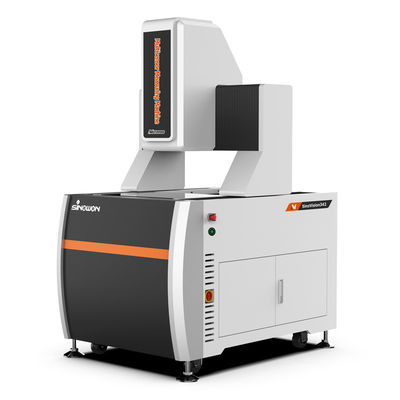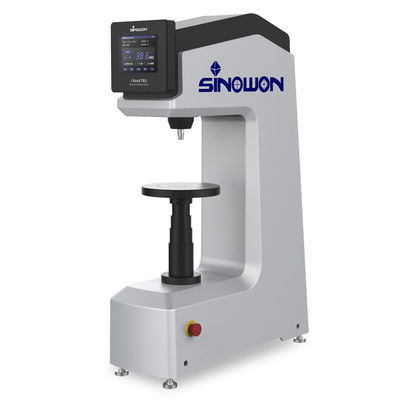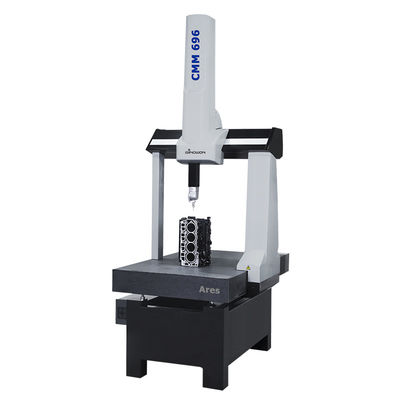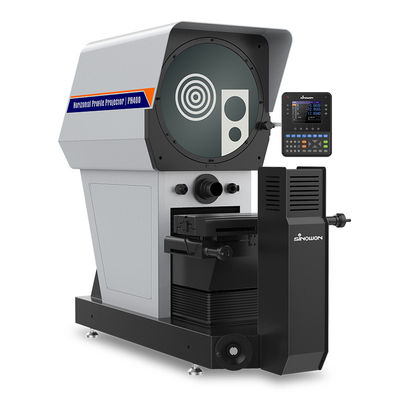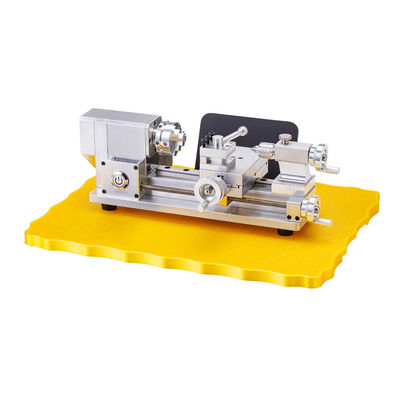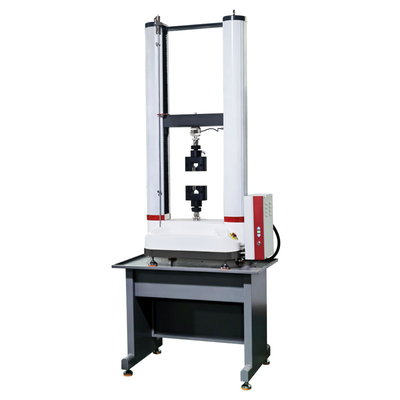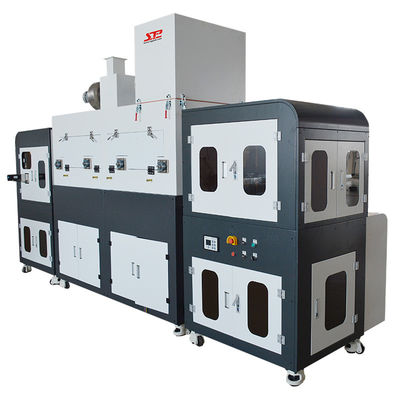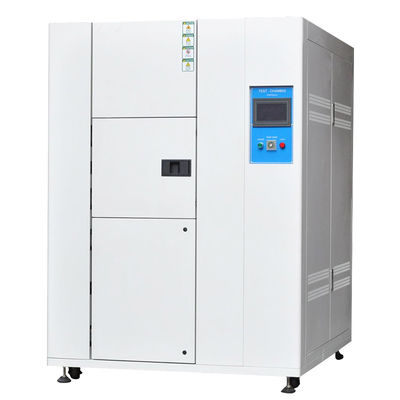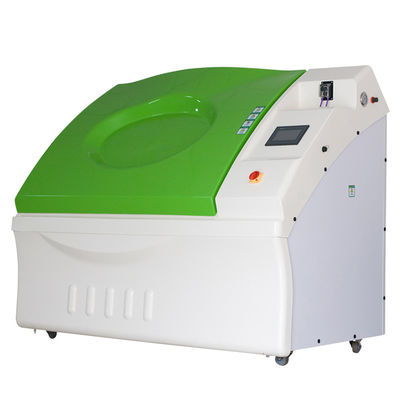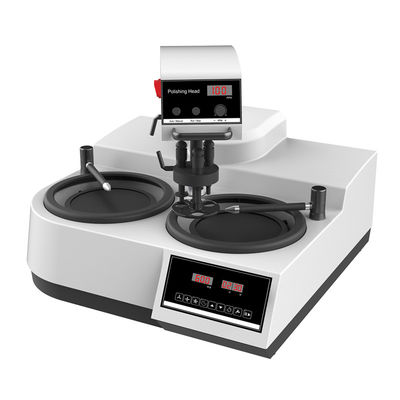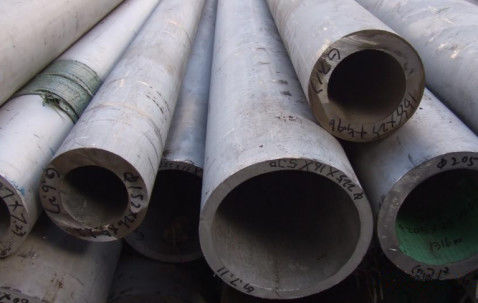Application of Ultrasonic Hardness Tester in Hardness Measurement of Large Metal Round Pipe Fittings
The results of hardness testing can reflect the differences in chemical composition, microstructure and treatment process of materials under certain conditions. Therefore, hardness testing is the most commonly used, fastest and most economical test method in mechanical property testing.
I. Hardness Measurement of Large Metal Round Pipe Fittings (fig. 1).

Fig. 1: Large metal pipe fittings
Commonly used test methods include Brinell hardness tester, Rockwell hardness tester, and Vickers hardness tester.
Commonly used portable hardness testing methods include Leeb hardness tester, ultrasonic hardness tester, etc.
Brinell hardness tester and Rockwell hardness tester use the macroscopic hardness test method. The Brinell hardness value is the detection force divided by the spherical surface area of the indentation, and the Rockwell hardness tester is the residual increment of the indentation depth. The Vickers hardness value is the detection force divided by the indentation surface area.
Brinell and Rockwell hardness are measured by macroscopic pressure, large indenter ball diameter, and large indentation diameter (Fig. 2). Vickers has high requirements for the operator's level of operation and long operation time. Therefore, desktop hardness tester is suitable for batch inspection, on-site inspection of large workpieces and non-destructive testing.
In 1961, Dr. Claus Kleesattel invented the UCI (Ultrasonic contact impedance) method. Because of its advantages of easy portability, fast measurement speed, non-destructiveness, and wide application range, it has been widely used in recent decades and has become one of the important and reliable hardness testing methods.

Figure 2. Using Sinowon VM-500 high-definition microscope to magnify 412 times to observe the comparison of ultrasonic hardness measurement indentation and Rockwell hardness measurement indentation diameter
(The indentation diameter of ultrasonic hardness tester is 0.026mm, and the indentation diameter of Rockwell hardness tester is 0.484mm)
II. Ultrasonic Hardness Tester Working Principle
Ultrasonic contact impedance is a dynamic indentation method that does not measure indentations directly. A vibrating rod with a specific indenter (regular quadrangular pyramid diamond indenter) at the end is stimulated to perform longitudinal ultrasonic vibration. By pressing the indenter into the test surface with a certain test force, the longitudinal vibration of the vibrating rod will be impeded and the resonant frequency will change. The amount of change is a function of the surface area of the indentation and the effective modulus of elasticity of the system, and the hardness value is obtained from the amount of frequency change.

III. Difficulty in Measuring the Hardness of Large Pipe Fittings
Because of its heavy weight, the desktop hardness tester can only be used in a fixed place in a laboratory or workshop. There are many types of large pipe fittings that need to be measured. The workpiece is large, and the use of desktop hardness measurement needs to be cut before using the desktop hardness tester measurement, the detection efficiency is low, and the product can only be scrapped after testing. Therefore, it is only suitable for random sampling destructive test hardness, and is not suitable for users to conduct large-scale hardness inspection of workpieces on site.
Portable Leeb measurement began to be used in hardness measurement technology in 1978. The Leeb hardness tester uses the impact principle to calculate the hardness value by the ratio of the speed of the rebound to the speed of impact. Because the Leeb hardness tester has high requirements for the size, weight and roughness of the measured workpiece, and the indentation is obvious after measurement, it is not suitable for full product inspection.
IV. Compared with traditional desktop hardness testers, ultrasonic hardness testers have the following advantages:
The detection speed is fast and the efficiency is high.
Traditional Rockwell hardness tester, Brinell hardness tester and Vickers hardness tester need to load a certain force value on the workpiece and then unload and measure the indentation depth, diameter and diagonal of the workpiece after loading, and it takes about 30~50 seconds to test a workpiece.
The ultrasonic hardness tester adopts electronic measurement method, and the ultrasonic probe sensor measures through the change of ultrasonic frequency, and it only takes 3~5 seconds to test a workpiece, which greatly improves the work efficiency.
Easy to carry and measure on site
To use a Rockwell hardness tester, Brinell hardness tester, and Vickers hardness tester to detect hardness, it is necessary to cut the workpiece into small parts before testing.
Ultrasonic hardness tester is small in size, can be used for hardness testing without damaging the workpiece, and is suitable for on-site hardness testing of large or special-shaped workpieces, and is widely used in aviation, aerospace, industry, etc.
Non-destructive testing of workpieces
Traditional Tynell Rockwell and Brinell measurements use macroscopic measurement methods to indentate large ones. Ultrasonic hardness testers use a low-load ultrasonic probe that does not leave visible indentations after measurement, as it is suitable for users who require high surface non-destructive testing.
High precision and good stability
The comparison of the results of the ultrasonic hardness tester and the apparent dimension hardness tester for the same workpiece is shown (Table 1).
Comparison of test results using a microhardness tester and an ultrasonic hardness tester
| Testing Instruments |
Vicky MHV-1000 Microhardness Tester(HV1) |
SU-300H Ultrasonic Hardness Tester |
| Test Results |
505 |
481 |
480 |
477 |
492 |
485 |
489 |
489 |
485 |
489 |
| Average Value |
487 |
487.4 |
| Repeatability |
28 |
4 |
Table 1. Comparison of the results of ultrasonic hardness tester and apparent dimension hardness tester for measuring the same workpiece

V. Test Conclusions:
Through the comparison of the above results, the ultrasonic hardness tester has higher repeatability, better accuracy and stability.
SU-300H ultrasonic hardness tester can directly detect the hardness of large metal round pipe fittings, and quickly screen out products that do not meet the hardness standard.
Ultrasonic hardness tester has the advantages of fast speed, easy to carry and high accuracy. It can solve many irregular, large workpieces, and workpieces that cannot be tested by desktop hardness tester, and can also be used for on-site hardness inspection of large quantities of finished workpieces, and there is no need to worry about the problem of product scrap after hardness testing.
The ultrasonic hardness tester uses a small load test force to measure thinner workpieces that the Leeb hardness tester cannot measure, such as thin plates, thin-walled pipes, electroplating layers, spray coatings, nitriding surfaces, carburized surfaces, and other surface hardness. No visible indentations are left on the surface of the workpiece after the test. Therefore, it is ideal for high-end users who require no damage to the surface of the product, and can perform hardness measurement without damaging the finished product.
With SPC data processing software, it supports online data and historical data to receive statistics, visualized measurement data, intuitive icon display, can set upper and lower limits, highlight abnormalities, support saving and export reports, and test data can be traced.
Sinowon Precision SU-300 series ultrasonic hardness tester provides an efficient on-site hardness testing solution for modern industrial production. While improving the quality control of the enterprise, it reduces the loss of the enterprise and increases the profit of the enterprise.
VI. Brand Recommendations:
Dongguan Sinowon Precision Instrument Co., Ltd. is a high-tech enterprise, a national standard formulation enterprise for ultrasonic hardness testers, a leader in the ultrasonic hardness tester industry, and a leading enterprise in the export of ultrasonic hardness testers. With 300 dealer service outlets in China, it is the first brand for users to buy ultrasonic hardness testers.

 Your message must be between 20-3,000 characters!
Your message must be between 20-3,000 characters! Please check your E-mail!
Please check your E-mail!  Your message must be between 20-3,000 characters!
Your message must be between 20-3,000 characters! Please check your E-mail!
Please check your E-mail! 
